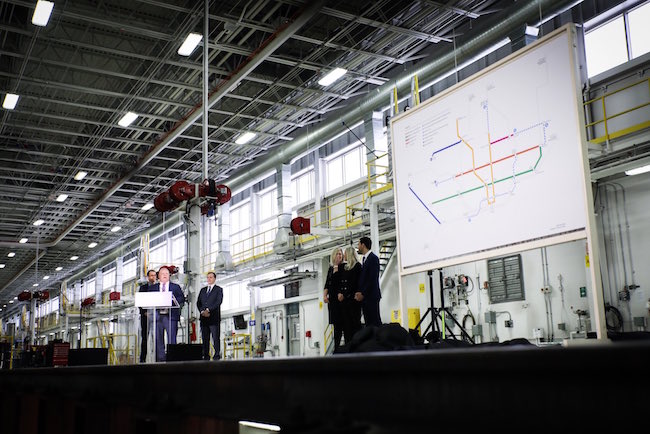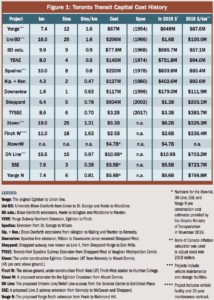
With Toronto transit costs ballooning, new report lays out strategies for keeping lid on spending
By On-Site Staff
Financing InfrastructureTransit construction costs have grown considerably since the city's initial subway building boom, and inflation doesn't account for it

Last April, the provincial government announced a major realignment of transit funding for the Toronto area, including its initial plans for the Ontario Line. PHOTO: Doug Ford/Twitter
Last April, the Ontario government literally pulled back the curtain on a new plan for four transit projects across the Greater Toronto Area — a new subway, an LRT extension and two subway extensions. The initiative is forecast to cost nearly $30 billion over the next decade.
There’s little question over whether the city needs the increased transit capacity, but a new report, commissioned by the Residential and Civil Construction Alliance of Ontario (RCCAO), assesses the strategy behind the spending and urges planners to better control costs through design.
When comparing inflation-adjusted costs of the city’s past transit projects — even those considered particularly expensive at the time — cost estimates for the proposed Ontario Line, Eglinton West LRT, Yonge North Subway Extension and Scarborough Subway Extension show hefty premiums.
As detailed in the chart on the right, the cost per kilometre for the new or extended lines is likely to approach double the cost for the long-delayed, and often criticized, Toronto-York Spadina Subway Extension (TYSSE) and approximately seven-times the amount paid per kilometre for the city’s original subway lines built in the 1950s and 1960s.
“Subway-building costs in Toronto rose almost in lockstep with the inflation rate throughout the second half of the 20th century, before suddenly soaring at about twice that rate in the 21st,” the report says. “Subways cost far more now in real dollars than they did decades ago, even though the latest projects have had fewer stations per kilometre and traverse simpler, less-dense contexts.”
Though some cost increases can be attributed to factors beyond the control of transit planners — higher labour and materials costs, for instance — the report points to the tunnelling method and tunnel depth as two of the most important variables in recent cost run-ups. As on older subway projects, the report advises turning to cheaper cut-and-cover tunnels, or above-grade alignments to keep costs under control on future projects.
Among other areas of focus, the report points to controlling expenses on stations, which added considerably to costs on the TYSSE, limiting political influence in the planning process and making better use of the P3 project delivery model as three other important areas to watch.
In all, the report makes 10 key recommendations for rethinking transit planning and construction. You can read the full report here.





